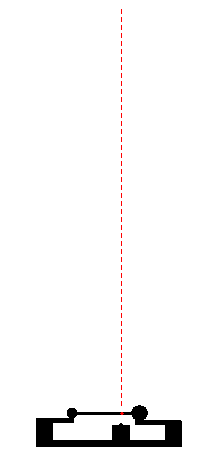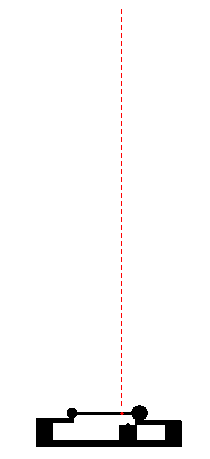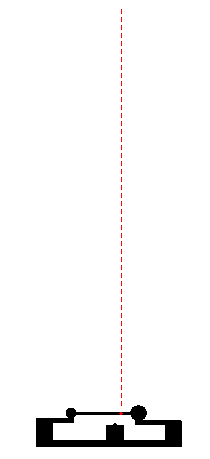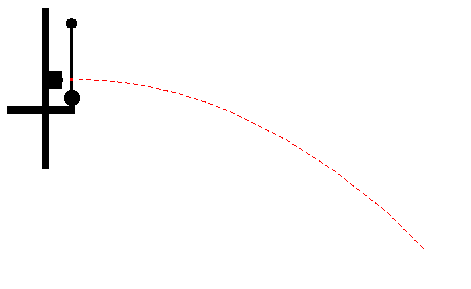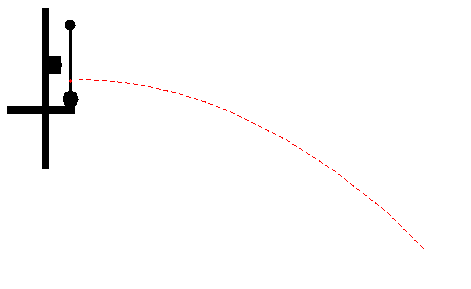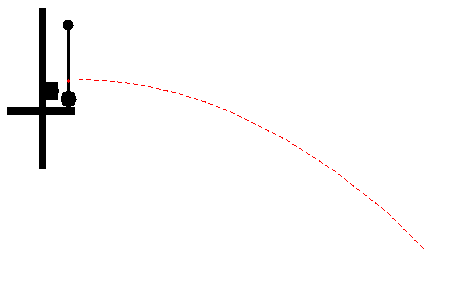| The movie at left shows an object which is more massive at one end than the other, so that the COM is located towards the larger (more massive) end. When the object is struck at the COM the object translates (moves in a straight line) but does not rotate about the COM. |
In the middle movie the object is struck to the right of the COM. Now the objects translates and rotates counterclockwise about the COM. Notice that the COM moves in the same straight line as it did when the impact was at the COM. This illustrates that the COM is the single point which characterizes the translational motion of the object. |
Now the object is struck to the left of the COM so that it translates and rotates clockwise about the COM. Notice, once again, that the COM moves in the same straight line as it did when the impact was at the COM. This again illustrates that the COM is the single point which characterizes the translational motion of the object. |


